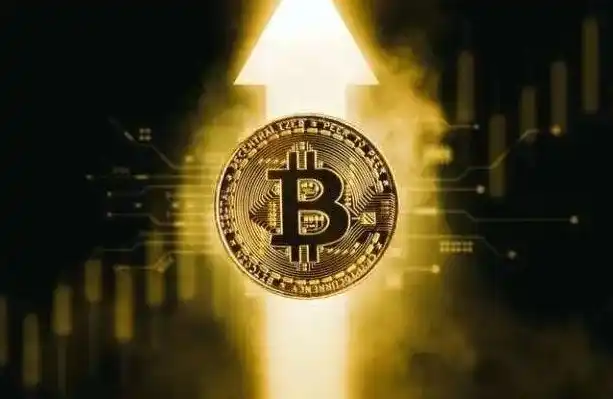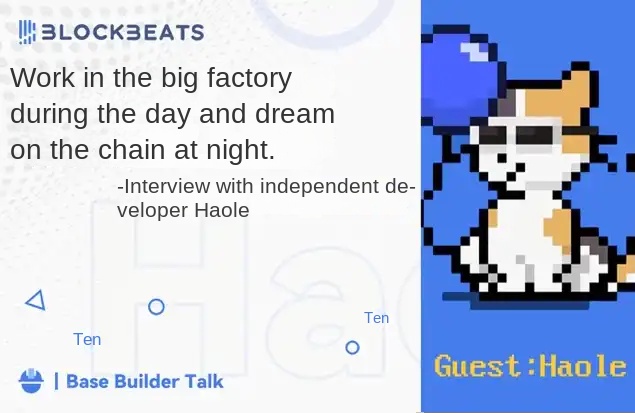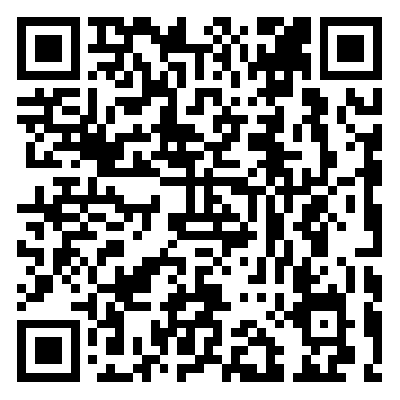ABCDE: From a VC Perspective, Discuss the Recent Changes in the RWA Space
Original Title: "Discussing Recent Changes in the RWA Track from a VC Perspective"
Original Source: ABCDE
Having covered the Western and Eastern perspectives on the market in the previous article, today coincides with YZi Labs announcing their investment in Plume Network, an RWA platform. I would like to discuss the recent changes I have observed in the RWA track.
This matter needs to be broken down into four parts:
1. Does RWA truly have practical applications, or rather Product-Market Fit (PMF)?
2. Which RWA assets are suitable for on-chain and which are not?
3. What were the past solutions, and what are the current solutions?
4. The direction of RWA in recent months, have you perceived any changes?
Let's start with 1 - Does RWA truly have practical applications?
Or PMF - (First of all, let's exclude the stablecoin track of on-chain U.S. Treasury bonds; projects like Usual, MKR, etc., are considered to have already found PMF.) Taking U.S. stock on-chain as an example, this is the most controversial topic on Twitter. Many people think that putting U.S. stocks on-chain is redundant. Those who really want to speculate in U.S. stocks have their own channels. On-chain, any random underlying asset is more volatile than U.S. stocks, so there's no need to play stocks on-chain.
I have a different opinion on this. Personally, I think U.S. stocks have their significance on-chain.
1. From a channel perspective - Indeed, most big shots above A8 and A9 use platforms like Futu, FirstTrade for stocks, cryptocurrencies, gold, and other diversified investments. However, I believe that most retail investors in the crypto space do not have a U.S. stock account. On-chain U.S. stock trading can at least open up their purchasing channels without any barriers.
Looking from another perspective, as the total market value of stablecoins like USDT/USDC continues to grow, this is another diffusion path of U.S. dollar hegemony compared to traditional finance. If Crypto, through stablecoins, Payfi, and smart wallets with an experience similar to Alipay, truly moves towards Mass Adoption one day, do you think Americans are willing to let the whole world take over U.S. stocks for them? Would people in most other countries rather open various bank and brokerage accounts, fuss for days to buy their own country's lackluster stocks, or simply place an order like shopping on Taobao to invest in the seven sisters of the world's largest economy?
2. From an application perspective, imagine this case: as a rookie trader, you made a quick $100,000 from Mubarak in a few days. Knowing that Tesla recently took a dive, presenting a good buying opportunity, you decide to convert this $100,000 into Tesla stock.
Even if you have a US stock account, you need to first convert these 100,000 U into fiat currency, send the fiat currency to the broker's account via bank transfer, and then start buying on the broker's platform. This whole process usually takes 3-5 business days. (In 2017, before I got into Bitcoin, I bought US stocks in Australia through FirstTrade. Just the Swift transfer took 4-5 days and incurred a hefty fee of tens of dollars). If one day your Telstra stock goes up and you want to sell it to convert to BTC or U, you'll have to go through this process all over again... Imagine if there were US stocks on-chain, and you could instantly convert the U you earned from a Meme into Tesla. The reduction in frictional costs is not just a little bit; it's a multiple of 10 or even 100, greatly enhancing the user experience.
Now, let's talk about 2 - Which RWA Assets are Suitable for On-chain
Similarly, assets like T-Bills, which have already proven themselves, are not up for discussion. As for other RWA assets, it actually depends on the specific target audience.
For the To C end-users, stocks are undoubtedly the most suitable. Most retail investors have probably never dealt with primary private equity. Even if you tokenize the equity of a non-public company, there are probably not many people who can understand, buy, and hold it. Assets like private credit collateral on platforms like Centrifuge, such as bridge loans in the real estate market and loans backed by corporate receivables, are also not suitable for To C. The vast majority of To C end-users are most familiar with stocks. In To C scenarios, the asset should be brought on-chain to bridge users who previously had no channel to purchase, which is a process from 0 to 1.
As for To B end-users, there are many more things that can be tokenized. However, compared to To C's journey from 0 to 1, To B is more about reducing friction from 1 to 100. For example, primary private equity is already circulating among some institutions and high-net-worth individuals. The bridge loans collateralized on Centrifuge that could be taken to a bank will likely still be granted, but the process of this flow is relatively cumbersome, with significant friction. Placing it on-chain, just like Payfi compared to Swift, can greatly enhance user experience and transaction speed.
Thinking about this, I remember a discussion about an RWA project last year. The parent company is a well-ranked asset management firm in the United States. They plan to issue tokens based on the primary equity of their clients on their asset management platform, such as Musk's SpaceX. These tokens can easily circulate and change hands on their own trading platform, allowing for a one-time settlement when SpaceX goes public. So, for To B, in addition to being limited to trading users from institutions and enterprises, the issuing entities are also relatively restricted. In the example above, unless you already hold a significant amount of SpaceX equity through asset management, if you are simply an STO or RWA platform, and you want to attract SpaceX equity holders to issue tokens representing SpaceX equity on your platform, this process involves resource collaboration, legal terms, and other frictions.
There are also many intermediary entities that can be To C or To B, such as on-chain IPs like Story Protocol, or royalties from a novel, box office earnings from a movie, or sales from a game—all of which can be tokenized. It feels like we are still in the early stages of exploration, where each use case needs to be individually tested and proven. For example, Influence Tokenization; while FT failed, Kaito has been relatively successful. Celebrities' time tokenization; http://Time.Fun made a buzz for a few days and then disappeared. These things need to be taken step by step.
Next is 3 – What were the past solutions, and what are the current solutions?
Let's continue to use the example of the U.S. stock market. In the past, the solutions were mainly based on synthetic assets, represented by SNX, Terra's Mirror, and GNS.
At present, this path seems to have been mostly debunked. The above three platforms had already delisted the synthetic U.S. stock assets they previously offered. The reasons for this are twofold: first, people are not very interested in synthetic "fake assets" created by holding stablecoins or the native token (such as SNX). You can see the vast difference in volume between BTC, WBTC, and SNX's SBTC. To be honest, synthetic assets do not provide as much confidence as WBTC, which is a "mapped asset." Second, back then, the SEC was quick to investigate. Even though synthetic assets are fake, the SEC does not need a reason to investigate you. Hence, to avoid trouble, these platforms promptly delisted these synthetic U.S. stocks.
With the current administration change in the U.S. and a change in the SEC chairman, the regulatory environment in this area has significantly improved compared to the past two years. There are currently two approaches to on-chain U.S. stock trading.
One approach follows the traditional compliant Broker-Dealer route. When users purchase tokenized stocks on-chain, it triggers off-chain compliance by a Broker in the U.S. stock market. Essentially, this is similar to the buy and sell orders on Robinhood, whereby Citadel "agent buys" in the stock market. The advantage is that the stocks you purchase are "real stocks," or at least are 1:1 backed by this Broker, similar to WBTC in relation to BTC. The downside is that trading is synchronized with the stock market hours and cannot be 24/7 like in the crypto market. Additionally, you have to trust this Broker or platform. Also, selling triggers a Taxation Event, where U.S. citizens may need to submit tax-related forms, and non-U.S. citizens would need to undergo KYC procedures, which can be cumbersome.
The second approach is the strategy of the Ondo Global Market. After reviewing their documentation, it seems they initially intended to go the Broker-Dealer route mentioned above but later switched to a stablecoin-like method. This method allows their Issuer, with whom they collaborate or authorize, to directly issue tokenized stocks (similar to how Tether issues USDT or Circle issues USDC). The advantage is enhanced flexibility, potentially overcoming the restrictions of U.S. stock trading hours, settling through the Issuer at a specified time. The downside is that it is highly probable that only non-U.S. users can benefit, as U.S. users may be restricted. There is also the question of whether different Issuers issuing the same stock could lead to different CAs (similar to how different bridges to the same USDC on different chains are incompatible with each other); these specific details were not mentioned in the documentation, as the product is not scheduled for release until next year.
Lastly, platforms like Plume, which feel more like an RWA platform, seem more like a framework containing KYC/AML, data storage/execution, consensus, ZKTLS validation, and more. In theory, this could allow collaborating institutions to issue various Tokenized RWA assets here, which brings us back to the previous topic of "which assets are suitable for on-chain," without going into detail again.
Finally, let's talk about the recent trend in RWA over the past few months. Have you noticed anything?
If you have been observant, you would have seen that the RWA trend has actually been quite strong these past two months. Let me casually mention a few "news" items I have observed:
1. As mentioned above, the Ondo project plans to launch the Ondo Global Market by the end of this year or next year, an on-chain stock market. Ondo has also been closely associated with Trump's WLFI recently and will collaborate.
2. Sui has recently been cozying up to WLFI.
3. Frax has actively embraced Cedefi and recently launched frxUSD in collaboration with BlackRock+Superstate.
4. Ethena today released a new product, Converge, focusing on what they consider one of the most important two scenarios in blockchain - Storage and settlement for stablecoins and tokenized assets.
5. AAVE plans to launch a new coin, Horizen, causing a stir in the community. Stani personally came out to clarify - "The Horizen plan aims to complement the current missing RWA business sector of Aave, and the plan is expected to surpass the revenue of Aave's existing business lines in 5 years."
6. The Korean Financial Services Commission released a Release in February 2025, intending to gradually allow company entities to engage in virtual asset transactions.
From my Korean circle of friends, I learned that Korea may be planning to restart the STO (formerly known as the RWA cycle) project. Think about it, allowing "corporate entity transactions of virtual assets," this is definitely not to let your company speculate on coins, but to tokenize some real-world financial assets into "virtual assets" designed for circulation between companies.
7. YZi Labs today officially announced an investment in the recently thriving Plume Network RWA platform.
This series of messages makes up the Momentum. We can't just turn a blind eye to it. So, personally, my current view on the main track of the next Circle is PayFI+RWA+Web2.5-like Consumer APP. As for AI+Crypto, all I can say is that there is hope, and I am still discussing and observing. After I finish writing the next part "Some noteworthy things on ETH and Solana," I will write a separate piece on my recent thoughts on AI+Crypto as the fourth part of this large collection.
Welcome to join the official BlockBeats community:
Telegram Subscription Group: https://t.me/theblockbeats
Telegram Discussion Group: https://t.me/BlockBeats_App
Official Twitter Account: https://twitter.com/BlockBeatsAsia
 Forum
Forum OPRR
OPRR Finance
Finance
 Specials
Specials
 On-chain Eco
On-chain Eco
 Entry
Entry
 Podcasts
Podcasts
 Data
Data


 Summarized by AI
Summarized by AI







